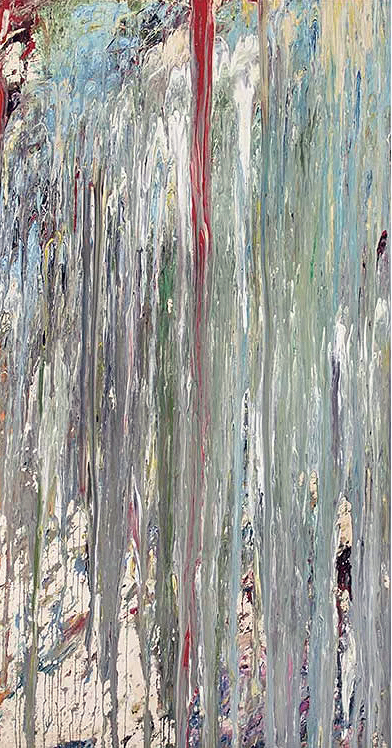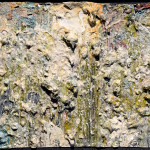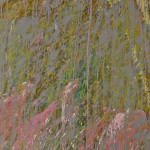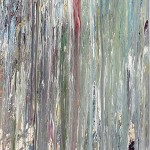Untitled #13
1974
Acrylic on canvas
55 1/2 x 29 inches
Signed and dated on versool “1974 L. Poons”
Ex-collection:
The artist
Knoedler & Company, New York
Galerie La Bertesca, Genoa, Italy
Christie’s East, November 10, 1998
Buschen Mowatt Gallery, Vancouver, Canada
Knoedler & Company
Private collection
Mark Borghi Fine Art until 2014
Private Collection
Notes:
Naturally, the result is the thing – and – it doesn’t make much difference how the paint is put on as long as something has been said. Technique is just a means of arriving at a statement. — Jackson Pollock
Pollock notably dispensed with the traditional use of artist’s brushes in the key period of his career. In what has been described as a kind of rhythmic dance, he dripped and poured elegant curlicues of paint on unstretched canvas laid out on his studio floor. His methods had an immediate and clear effect on his contemporaries and the next generation of painters. The younger Frankenthaler too explored the fluidity of paint, pouring paint onto unprimed canvas. She evolved to be a skillful practitioner of works that welcome the accidental effect. Morris Louis, like Frankenthaler stained his canvases, in bands and stripes of unmodulated hues in rich harmonies of translucent color. Poons for a period of a few years, threw paint and the studio in which Poons’ throw paintings were made retains more than mere traces of his method. The walls and floors are covered in a thick skin of pigment. The multi-colored room has the feeling of a hallowed and ancient place reserved for religious ritual.
In the catalogue to Poons’ 1981 retrospective at the Museum of Fine Arts, Boston, Kenworth Moffett reconstructed the artist’s working method in some detail. A canvas of fifteen to twenty yards was tacked onto a frame covering three walls of the studio. The paint was thrown from a can weighing as much as thirty pounds. The weight of the can and the expanse of canvas to cover
required an athletic sturdiness. The throw involving the whole body was two handed, and from the shoulder. If the paint wasn’t thrown with real force, it would fall onto the floor instead of adhering to the weave of the canvas. Moffett describes the succession of throws, the more or less intermingling of colors to produce a fluid shroud of light, both transparent and opaque.
The throw paintings, formed a bridge from his earlier optical dot paintings for which he became well known and his very recent lyrical abstractions, redolent of Impressionism. The throw paintings remain Poons’ unique contribution to Color Field painting of the 1960s and 1970s. In spite of their radical nature and aggressive means, their amorphous quality makes them appear more and more akin to Monet’s idyllic water lilies, anticipating Poons’ most recent work.


 Untitled
Untitled
 Untitled
Untitled
 Untitled #13
Untitled #13